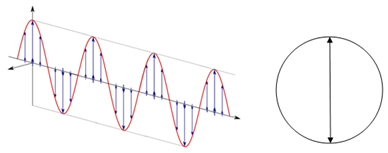Ionization is a chemical reaction that originates ions from molecular substances placed in water.
So, we can say that ionization is the process ofion formation.
Acids are examples of substances that undergo ionization when placed in water.
ionization process
See how the ionization process occurs through the following example:
When placed in water, hydrochloric acid (HCl) undergoes ionization. The chemical bond between H and Cl is broken and H ions are formed+ and Cl-, which are surrounded by water.
As we have seen, the H+ lost an electron and the Cl- received an electron. However, the H+ it needs to stabilize and so it binds to water.
Thus, the HCl ionization reaction can also be represented as follows:
Now we observe the formation of the hydronium cation (H3O+), result of the union of the H+ and from H2O.
It is also important to note that in this example, Cl receives the electron because it is the most electronegative, that is, it has a tendency to gain electrons. Therefore, it easily attracted the electrons to itself.
Read too:
- electrons
- ion, cation and anion
- Chemical reaction
Check out other ionization examples:
1)
2)
THE ionization energy or ionization potential is a periodic property that indicates the amount of energy needed to transfer an electron from an atom in a ground state.
Dissociation and Ionization
THE dissociation it is a physical phenomenon, not a chemical reaction. It refers to the release of existing ions from ionic compounds in water.
The main difference between dissociation and ionization is:
- Ionization: ions are formed;
- Dissociation: existing ions separate.
The dissociation process only takes place with salts and bases. Example: NaCl, table salt.
Dissociation and ionization are important processes for chemical reactions to take place, as free ions are more reactive than molecules.
Read too:
- Acids
- salts
- Bases
- ionic balance
- Concept and determination of pH and pOH
- Neutralization reaction
Be sure to check entrance exam questions on the subject, with a commented resolution, in: exercises on inorganic functions.


